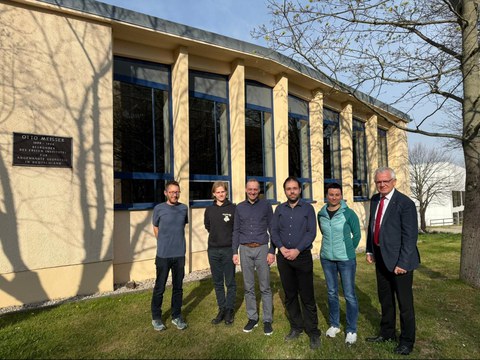Electromagnetic conductivity mapping for earth electrode design
The ongoing integration of renewable energy sources requires a major expansion of the electricity grids in Germany. The earthing systems required for overhead lines and transformer substations are very cost-intensive due to the quantities of earthing material (copper or stainless steel) and ground work required, and also have a negative impact on the environment. Earthing systems are always dimensioned on the basis of measurements of electrical ground conductivity, in which metallic electrodes are galvanically coupled - i.e. driven into the ground surface. Particularly in the case of stony soils, this involves a great deal of effort and leads to large contact resistances to the rock, which can often only be overcome by very high measurement voltages.
As a result, the accuracy of the measurement results is reduced on the one hand and the effort required to ensure occupational safety increases on the other due to the high voltages. With good coupling to the soil, galvanically coupled measurement methods offer sufficient accuracy, but only provide a very simplified image of the upper soil conductivity due to the limited penetration depth caused by the measurement principle. As climate change is expected to lead to a steady drying out of the soil, a decrease in average soil conductivity is also to be expected. This means that deeper areas of the subsoil must also be taken into account when designing earthing systems.
Due to the limitations and uncertainties of the measurement methods used to date, earthing systems are often oversized. To avoid this, a new system for determining the electrical conductivity in the ground using electromagnetic mapping methods is to be developed. Coupling by means of electromagnetic waves eliminates the need to insert electrodes into the ground at the measuring points, which is particularly advantageous in stony or built-up soils. In addition, the time required for a single measurement is reduced, which makes it possible to map larger areas with the same effort. Furthermore, the electromagnetic method, due to its principle, ensures conductivity mapping to greater depths than with the previous galvanically coupled methods.
The aim of the project is to set up a demonstrator with which the ground conductivity can be determined more precisely, with higher resolution and to greater depths than with the methods used to date. This will allow earthing systems to be designed more precisely and in a more targeted manner and minimize the amount of material required and the impact on the environment (e.g. surface sealing).
Coordination: TU Bergakademie Freiberg, Institute for Geophysics & Geoinformatics, Prof. Dr. Thomas Günther, PD Dr. Jana Börner, Dr. Mathias Scheunert, Sascha Weit
Consortium: TU Dresden, Chair of Electrical Power Supply, Prof. Dr. Jan Mayer, Prof. Dr. Peter Schegner, Christian Jäschke, Jan Keller
Associated partners: DNV Energy Systems Germany GmbH, Dr. Fabian Ossevorth


